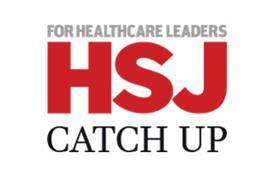The Keogh review into high mortality rates at 14 NHS hospital trusts has once again brought the debate over the indicator to the fore.
The 14 hospitals were chosen because they had higher than expected HSMR or SHMI mortality rates.
But what are these mortality rates, how are they calculated and what can they tell us about the standards of care provided by the NHS?
Hospital Standardised Mortality Rates (HSMRs)
HSMRs first emerged in 2001, published in the Hospital Guide, by Dr Foster Intelligence Unit based at Imperial College London.
They measure whether the number of deaths observed at a hospital is higher or lower than was expected, based on a statistical calculation looking at 56 diagnostic groups which account for around 80 per cent of all hospital deaths.
To arrive at the calculation, Dr Foster uses Hospital Episode Statistics data which is routinely collected by NHS providers often for financial payment reasons.
This data is used as part of a calculation which also takes into account the patient’s age, the severity of their illness and a range of other factors, such as deprivation and comorbidities to produce an expectation of whether they were likely to survive or not.
If the numbers of observed deaths equals the number of expected deaths then the trust will score an average 100. Below 100 means a trust has fewer deaths than were expected and above 100 means it had more deaths than were expected.
Confidence intervals are used to determine when a trust is considered to be a significant outlier.
What can we learn from HSMRs
The HSMR rate for a trust can only tell you that the mortality rate is higher than expected and it cannot explain why this is the case. By chance, some trusts will have a higher and some trusts will have lower mortality rates. Difficulties in “coding” deaths when staff translate a patient’s care into usable HES data can also skew the results higher or lower. The use of palliative care codes can also affect the mortality rate and has resulted in allegations of gaming against some trusts who had inexplicably high palliative care deaths in the past.
Each year the score is re-based on a national scale to take account of continuing improvements in mortality and to enable comparisons between trusts. But this also inevitably means trusts who have improved may not see this reflected in their overall score if other trusts have improved further.
The numbers cannot be related to actual individual deaths but are statistical estimates only and cannot be used to describe avoidable or unnecessary deaths.
Robert Francis QC, chairman of the public inquiry into failings at Mid Staffordshire Foundation Trust, described HSMRs as a warning sign, an indicator of potential concern.
It was the high HSMR at Mid Staffordshire in 2007, coupled with rising local anger, which prompted the Healthcare Commission investigation into standards of care there.
Summary Hospital-level Mortality Indicator (SHMI)
The SHMI was developed as a response to the first Francis inquiry into Mid Staffordshire in 2010.
While similar to HSMRs it has a number of key differences. It includes data on the number of deaths within 30 days post discharge and covers 100 per cent of deaths in hospital unlike HSMRs. It does not take into account palliative care.
The results of SHMI are represented with the average score rated as 1.
Trusts which score below a rate of 1, for example 0.95 can be said to have five per cent fewer deaths than were expected.
A score of 1.05 would represent five per cent more deaths than expected.
Again 95 per cent confidence intervals are used to determine trusts who are significant outliers.
What can we learn from SHMI
Just like with HSMRs a SHMI result needs to be interpreted carefully.
It cannot say with any certainty that an exact number of people died and it cannot show whether those deaths were as a result of poor care.
According to the Keogh review documents: “SHMI can be used as a potential smoke alarm for potential deviations away from regular practice.”



























11 Readers' comments